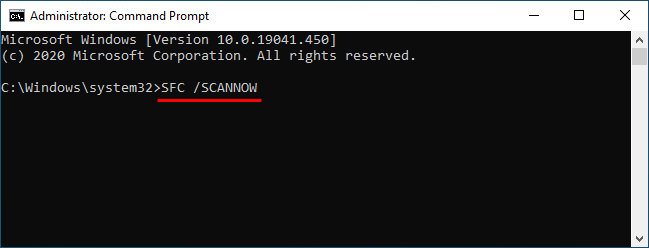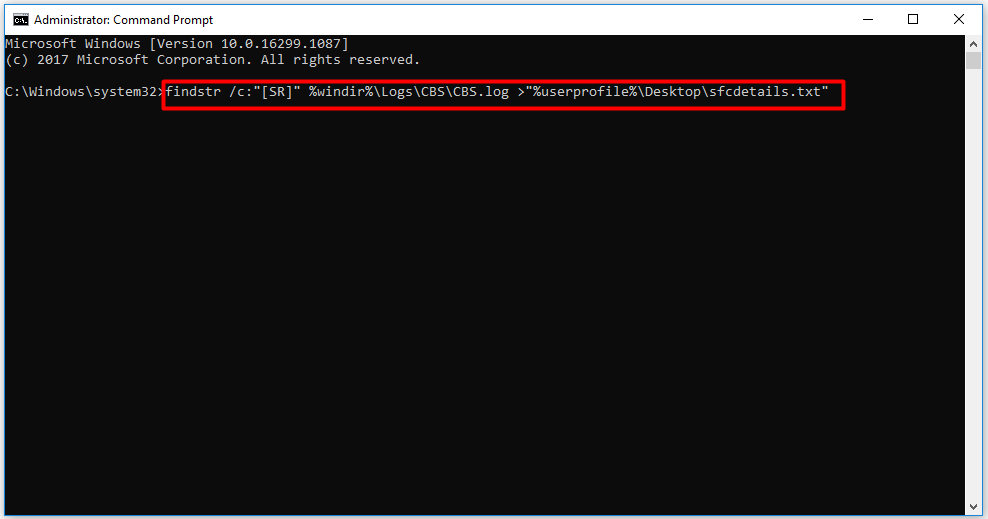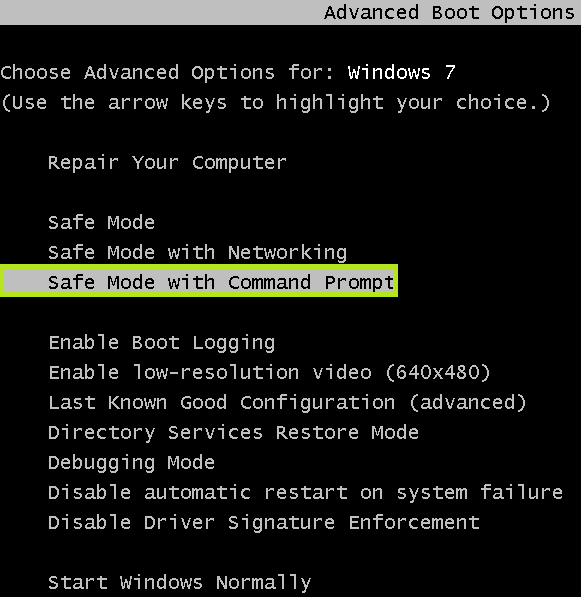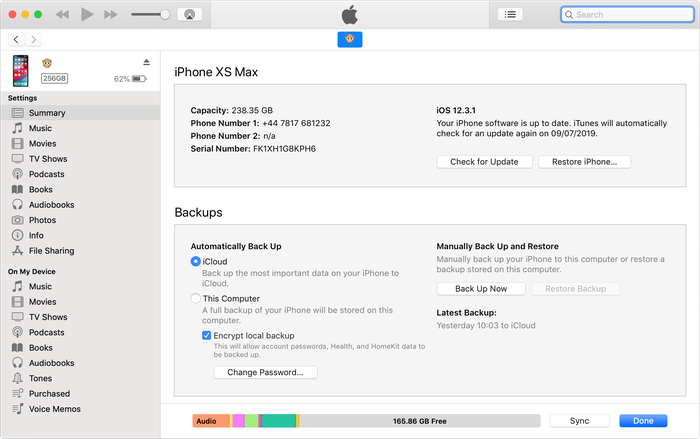
#Cmd filesafe drivers#
So updating your drivers should always be one of the first fixes you try.ĭriver Easy will automatically update all your device drivers to the latest correct version with just a couple of clicks. Many computer problems are caused by outdated device drivers.
#Cmd filesafe driver#
If you couldn’t solve your computer problem in Safe Mode but you can still run Windows normally, give Driver Easy a try. Your computer will then restart and another screen opens showing a lot of different startup options.ħ) On your keyboard, press the number 4 key to enter Safe Mode without internet access or the number 5 key to enter Safe Mode with internet access:Ĭan’t solve the problem? Try Driver Easy. The Windows RE (Recovery environment) screen will then display. If you can boot to the login screen, you can enter Safe Mode from there:ġ) On your keyboard, hold down the Shift key.Ģ) While holding down the Shift key, click the power button at the bottom right of the screen, then select Restart. Method 4: Start Safe Mode from the login screen When you want to return Windows to normal mode, you just have to undo your changes:Ģ) Select the Boot tab, then UNcheck Safe boot and click OK.ģ) When you’re prompted to restart your computer to apply these changes, click Restart and you’ll boot into normal mode.

To turn off Safe Mode and go back to normal mode If you’re able to launch Windows normally, you can boot into Safe Mode using the System Configuration tool:ġ) Click the Windows start menu and type msconfig, then click Open:Ģ) Select the Boot tab, then check Safe boot and click OK.ģ) When you’re prompted to restart your computer to apply these changes, click Restart and you’ll boot into Safe Mode. Method 3: Start Safe Mode using the System Configuration tool IMPORTANT: If you follow these instructions, Windows will start in Safe Mode every time it restarts, until you undo your changes. Your computer will restart and present a list of different startup options.ĩ) On your keyboard, press the number 4 key to enter Safe Mode without internet access or the number 5 key to enter Safe Mode with internet access: It should now go into Automatic Repair mode: After you’ve done it 3 times, start your computer again and let it run. You’ll have to hold it for 4-5 seconds.ĭo this again, and then again.
#Cmd filesafe how to#
If you’re unable to launch Windows, and you haven’t enabled the F8 method above, this is how to start Safe Mode:Ģ) Press the power button to turn on your PC, and when you see the small spinning circle of dots that indicates Windows is starting, press and hold the power button until your PC shuts down. Method 2: Start Safe Mode by turning off your PC 3 times If the Boot Options menu above doesn’t display, and instead Windows just launches normally, it’s likely that you didn’t press F8 early enough. Now that you’ve enabled the F8 method, you can use it to start Safe Mode:ģ) Before anything appears on your screen, press F8 repeatedly until the Boot Options menu below displays. Now you can start Safe Mode using the F8 key Here’s how to get the F8 key to start Safe Mode in Windows 10:ġ) Click the Windows start menu and type cmd, then click Run as administrator:īcdedit /set bootmenupolicy legacyģ) Paste the copied command into the Command Prompt (right-click in the Command Prompt to paste), then press the Enter key on your keyboard.Ĥ) Reboot your PC.

From there, you could access Safe Mode.īut on Windows 10, the F8 key method doesn’t work by default. On Windows 7, you could press the F8 key as your computer was booting to access the Advanced Boot Options menu. First, you have to enable the F8 key method If you haven't already enabled it, and you can't access Windows to do so, skip to method 2 below. Method 1: Start Safe Mode by pressing F8 at startup IMPORTANT: This method must be manually enabled from within Windows.
#Cmd filesafe windows 10#
This article explains how to manually start Windows 10 in safe mode.


if you get a blue screen error every time you start Windows). But sometimes you’ll need to start it in Safe Mode manually (e.g. Sometimes Windows 10 will automatically start in Safe Mode (e.g. Safe Mode is designed to help you troubleshoot computer problems. It also won’t load many programs in the background. It uses only absolutely essential files and drivers.įor example, in Safe Mode, your screen will display only 16 colors and a very low resolution, and you won’t be able to print documents or hear audio. Safe Mode is a way to run Windows in its most basic form.


 0 kommentar(er)
0 kommentar(er)
